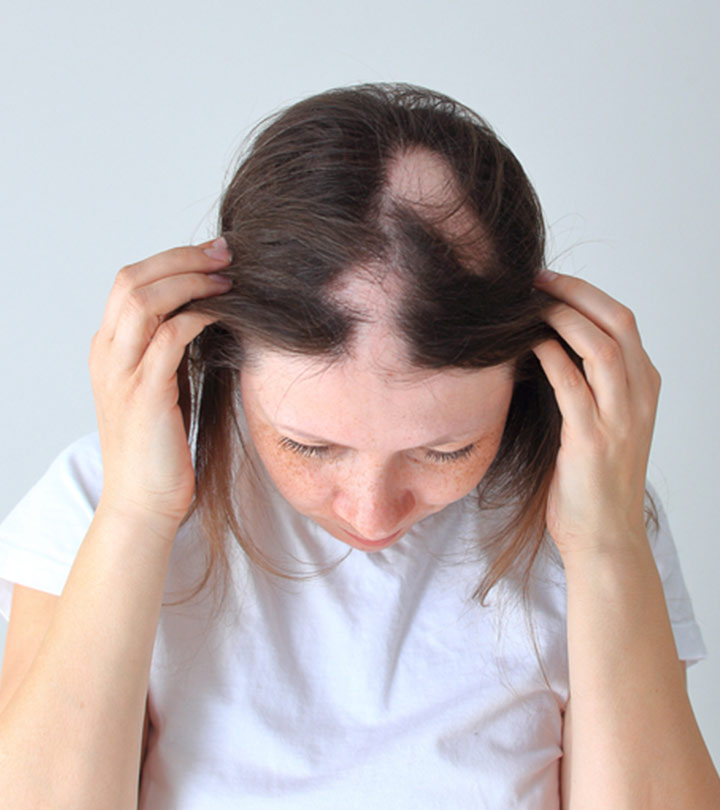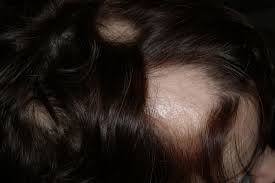ALOPECIA AREATA: causes and symptoms
Hair is made of protein called keratin
Precisely said , each hair is a string of dead keratin cells . Each hair follicle has its own life cycle that can be influenced by a variety of factors such as age, disease , etc .

Hair loss , scientifically known as alopecia, is a disorder that occurs when the natural life cycle of hair follicle is interrupted. It can occur on any part of the body ,but most affected is the scalp, on an average a scalp has around 100,000 hair that go through different phases of life cycle of follicle , that are shown below:
Anagen : active hair growth lasting between 2-8 years
Catagen: transitional hair growth lasting between 2-3 weeks
Telogen: resting phase that lasts about 2-3 months
Alopecia areata
In alopecia areata the immune system of the body starts attacking the hair follicles , mostly resulting in small round shaped patches of hair loss , but in some cases it can even exceed these limits . The exact cause of alopecia areata is not fully understood, but it is believed to be a complex interplay of genetic, environmental, and immune system factors.
 People getting Alopecia Areata
People getting Alopecia Areata
This disease evenly occurs to both male and female of any age . But if it occurs to children below 10 than its coarse tends to be more progressive. People with family history of alopecia areata or other autoimmune diseases such as psoriasis , thyroid disease or vitiligo are at higher risk of having alopecia areata .
Types
There are three main types of alopecia areata :
1.Patchy alopecia areata: This is the most common type , when hair loss happens in one or more coin-sized patches around the scalp or on different parts of the body
2.Alopecia totalis: In this type all or nearly all hair on the scalp is lost
3.Alopecia univarsalis: This is a rare type where all or nearly all the hair on the scalp , face and body is lost
Causes
Here are some of the key factors associated with the development of alopecia areata:
1. Autoimmune Reaction: It is widely believed that alopecia areata is primarily an autoimmune disorder. In this condition, the body’s immune system mistakenly attacks its own hair follicles. This attack disrupts the normal hair growth cycle, leading to hair loss.
2.Genetic Predisposition: There is evidence to suggest that genetics play a role in the development of alopecia areata. Individuals with a family history of the condition are at a higher risk of developing it themselves.
3.Environmental Triggers: Certain environmental factors or events may trigger or exacerbate alopecia areata in susceptible individuals. These triggers can include stress, illness, and exposure to certain chemicals.
4.Immunological Factors: The immune system, specifically T-lymphocytes (a type of white blood cell), is thought to be involved in the autoimmune attack on hair follicles. Inflammatory cytokines and other immune system components may contribute to the damage.
5.Viral Infections: Some research suggests that viral infections might play a role in triggering alopecia areata in certain individuals, although this is not fully understood.
6.Other Autoimmune Conditions: Individuals with alopecia areata are sometimes at a higher risk of developing other autoimmune disorders, such as thyroid disease or vitiligo and vice versa .
NOTE : It’s important to note that while the exact cause of alopecia areata is not known, researchers continue to investigate the condition to gain a better understanding of its underlying mechanisms.
Treatment options
There is currently no known cure for Alopecia Areata, but various treatments, such as corticosteroids, immunosuppressants, and topical medications, can help manage and stimulate hair regrowth in some cases. The effectiveness of these treatments may vary from person to person. It is advisable to consult a healthcare professional or dermatologist for an accurate diagnosis and appropriate treatment options.







